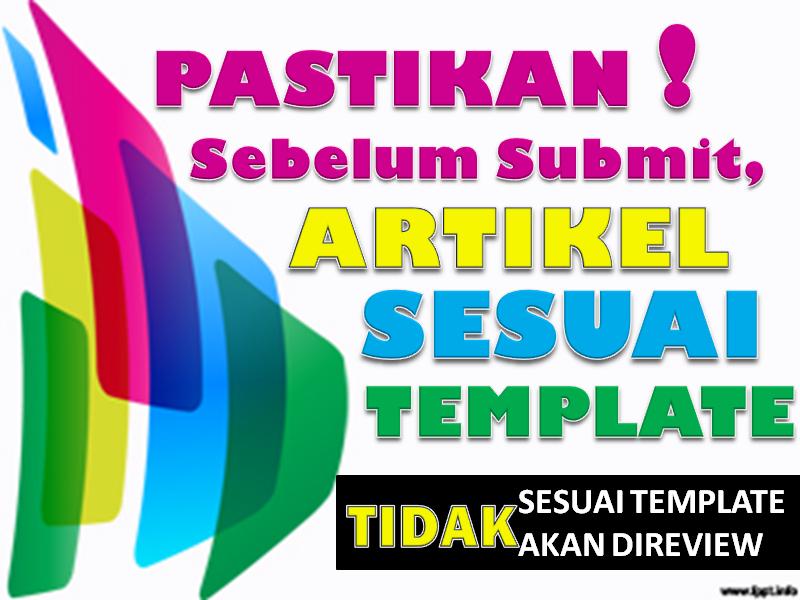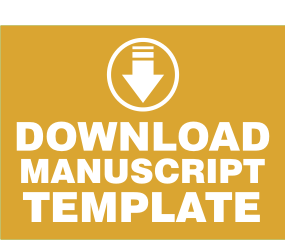IMPLEMENTATION OF COLLABORATIVE MULTIMODAL TEACHING TO DEVELOP STUDENT TEACHERS’ COMPETENCIES
(1) Universitas Suryakancana
(2) Universitas Suryakancana
(3) Universitas Suryakancana
(4) Universitas Suryakancana
(5) Universitas Suryakancana
(*) Corresponding Author
DOI: https://doi.org/10.26858/publikan.v13i2.28743
Abstract
Abstract: In the digital era, learners gain knowledge from various modes or multimodal. However, it is not in line with the Indonesian teachers’ competencies, particularly in conducting multimodal teaching. For the reasons, this study explored the development of student teachers’ competencies through collaborative multimodal teaching using VR. Moreover, it investigated the difficulties encountered by student teachers in developing the teacher competencies through collaborative multimodal teaching. The teacher competencies consist of the pedagogical, professional, social, and personal competencies (Ministry of National Education, 2007). This study applied qualitative design (multi-case study) involving 45 student teachers studying at three different study programs and 15 model teachers teaching at elementary schools in Cianjur, West Java. Three instruments were employed for the data collection of this study, i.e., observations, questionnaires, and interviews. The results indicate that the collaborative multimodal teaching (using VR) among the model teachers and the student teachers is conducted in five stages, i.e., observing, planning, simulating, practicing, and evaluating. In collaborative multimodal teaching using VR, students teachers involved in a group of teaching using VR as the instructional media naturally, get the transformation of pedagogical knowledge, and practice multimodal teaching directly in the natural teaching-learning processes. Moreover, it fosters the student teacher to develop the teacher competencies optimally, such as practicing teaching methodology and implementing multimodal teaching using VR in real-life contexts (pedagogic competence), expanding digital knowledge (e.g., VR), and utilizing it in teaching-learning processes (professional competence), showing pride in being future teachers (personal competence), interacting and communicating with the teachers and learners naturally (social competence). Thus, they are more ready to be future professional teachers in the millennial era. Nevertheless, they should keep learning and developing the teacher competencies (exceptionally professional and pedagogic competencies) to overcome teaching difficulties, such as learner characteristics, teaching management, material evaluation, curriculum development, and assessment.
Keywords
References
Abduh, M., & Zainudin, A. (2018). The Role of Indonesian Teachers’ Competencies in Developing Child-Friendly School. Journal of Education and Social Sciences, 3(May 2016), 10. Retrieved from https://www.researchgate.net/publication/322488839_The_Role_of_Indonesian_Teachers’_Competencies_in_Developing_Child-Friendly_School.
Charters, E. (2003). The Use of Think-aloud Methods in Qualitative Research an Introduction to Think-aloud Methods. Brock Education, 12(2), 68–82.
Creswell, J. W. (2008). Educational Research: Planning, Conducting, and Evaluating Quantitative and Qualitative Research. New Jersey: Pearson Education, Inc.
Creswell, J. W., & Clark, V. L. P. (2007). Designing and Conducting Mixed Methods Research. London, United Kingdom: SAGE Publication Inc.
Creswell, J. W., & Creswell, J. D. (2018). Research Design: Qualitative, Quantitative, and Mixed Methods Approaches. In Angewandte Chemie International Edition, 6(11), 951–952. (Fifth). Thousand Oaks, California: SAGE Publication Inc.
Dawson, C. (2009). Introduction to Research Methods: A Practical Guide for Anyone Undertaking a Research Project. (Fourth). Oxford, United Kingdom: How to Books Ltd.
Denzin, N. K., & Lincoln, Y. S. (2018). The SAGE Handbook of Qualitative Research. In Journal of Chemical Information and Modelling (Fifth, Vol. 53). https://doi.org/10.1017/CBO9781107415324.004.
Dornyei, Z. (2007). Research Methods in Applied Linguistics, Quantitative, Qualitative and mix methodology. Oxford: Oxford University Press.
Dugan, K. & Letterman, M. (2008). Student appraisals of collaborative teaching. College
Teaching, 56(1), 11-15.
Education Ministry. (2007). Lampiran Peraturan Menteri Pendidikan nasional Nomor 16 Tahun 2007 tentang Standar Kulaifikasi Akademik dan Kompetensi Guru.
Flick, U. (2018). The SAGE Handbook of Qualitative Data Collection. In U. Flick (Ed.), Journal of Chemical Information and Modeling (Vol. 53). https://doi.org/10.1017/CBO9781107415324.004.
Group, N. L. (1996). A pedagogy of multiliteracies: Designing social futures. Harvard Educational Review, 66(1), 60–92. https://doi.org/https://doi.org/10.17763/haer.66.1.17370n67v22j160u.
Heigham, J., & Croker, R. A. (2009). Qualitative Research in Applied Linguistics: A Practical Introduction (J. Heigham & R. A. Croker, Eds.). New York: Palgrave Macmillan.
Jewitt, C. (2005). Multimodality, “‘Reading’”, and “‘Writing’” for the 21st Century. 26(3), 315–332. https://doi.org/10.1080/01596300500200011.
Jewitt, C. (2008). Review of Research in Education. https://doi.org/10.3102/0091732X07310586.
Jewitt, C., Kress, G., & Ogborn, J. (2010). Exploring Learning Through Visual, Actional and Linguistic Communication: The multimodal environment of a science classroom. (August 2013), 37–41.
Kress, G. (2006). Literacy in the New Media Age. 10(2), 25–28.
Kress, G. (2010). Multimodality: A Social Semiotic Approach Contemporary Communication. New York: Routledge.
Kress, G., Jewitt, C., Ogborn, J., & Tsatsarelis, C. (2001). Multimodal teaching and learning: The rhetoric of the science classroom. London: Continuum.
Kuntarto, E., Nurhayat, W. I., Handayani, H., Trianto, A., & Maryono, M. (2019). Teacher’s Competency Assessment (TCA) in Indonesia: a New Frame Work. 2nd International Conference on Educational Assessment and Policy (ICEAP), (14), 8–20. https://doi.org/10.26499/iceap.v0i0.198.
Kvale, S. (2007). Doing Interviews. London: SAGE Publication Ltd.
Laadem, M., & Mallahi, H. (2020). Multimodal Pedagogies in Teaching English for Specific Purposes in Higher Education: Perceptions, Challenges and Strategies. International Journal on Studies in Education, 1(1), 33–38. https://doi.org/10.46328/ijonse.3.
Merriam, S. B. (1991). Case Study Research in Education: A Qualitative Approach. San Francisco, US: Jossey Bass Publishers.
Miles, M. B., Huberman, A. M., & Saldana, J. (2014). Qualitative Data Analysis: A Methods Sources (Third). London, United Kingdom: SAGE Publication Inc.
Papageorgiou, V., & Lameras, P. (2017). Multimodal teaching and learning with the use of technology: Meanings, practices and discourses. 14th International Conference on Cognition and Exploratory Learning in the Digital Age, CELDA 2017, (October), 133–140.
Rajagopalan, Isola. (2019). Concept of Teaching. Shanlax International Journal of Education, vol. 7, no. 2, 2019, 5-8.
Stake, R. E. (2006). Multiple Case Study Analysis. New York, United State: The Guilford Press.
Thomas, R. M. (2003). Blending Qualitative and Quantitative: Research Methods in Theses and Dissertations. California, USA.: Corwin Press, Inc.
Unsworth, L. (2014). Multimodal reading comprehension: curriculum expectations and large-scale literacy testing practices. Pedagogies, 9(1), 26–44. https://doi.org/10.1080/1554480X.2014.878968.
Yin, R. K. (2003). Case Study Research: Design and Methods (Third). London, United Kingdom: SAGE Publication Inc.
Yin, R. K. (2018). Case Study Research and Application: Design and Methods (Sixth). London: SAGE Publication Inc.
Zhou, G., Kim, J., & Kerekes, J. (2011). Collaborative teaching of an integrated methods course. International Electronic Journal of Elementary Education, 3(2), 123–138.
Article Metrics
Abstract view : 128 times |Refbacks
- There are currently no refbacks.
Copyright (c) 2023 Vina Nurviyani, Jauhar Helmie, Trini Handayani, Muhamad Syamsul Taufik, M. Budi Mulyadi

This work is licensed under a Creative Commons Attribution-NonCommercial-ShareAlike 4.0 International License.
Publikasi Pendidikan : Jurnal Pemikiran, Penelitian dan Pengabdian Masyarakat Bidang Pendidikan
ISSN 2548-6721 (online), ISSN 2088-2092 (print)
Email: [email protected]

Publikasi Pendidikan is licensed under a Creative Commons Attribution-ShareAlike 4.0 International License.
Publikasi Pendidikan : Jurnal Pemikiran, Penelitian dan Pengabdian Masyarakat Bidang Pendidikan Indexed by
































